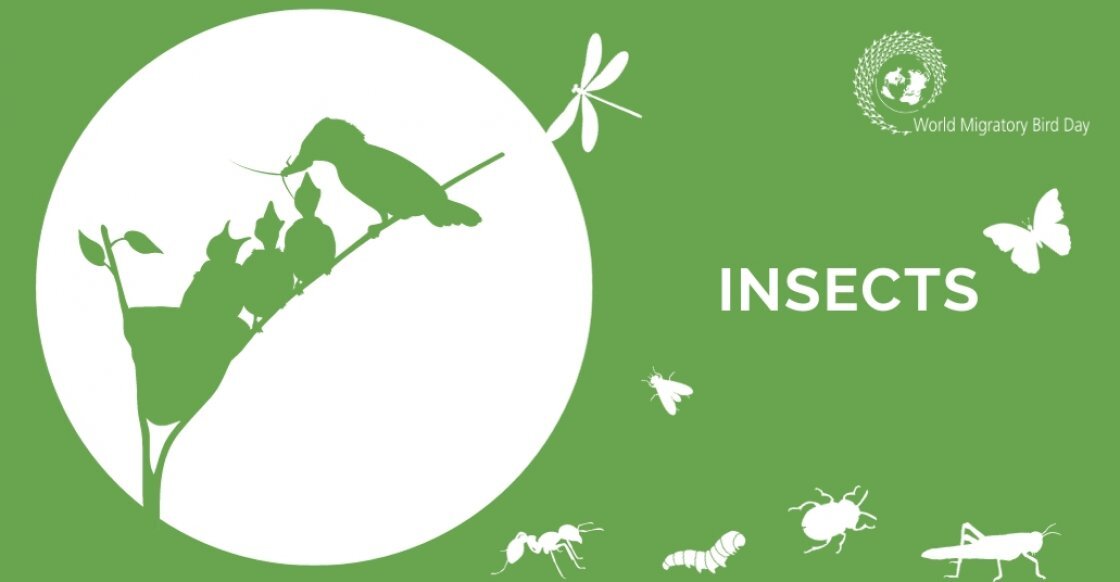World Migratory Bird Day stresses need for proactive conservation measures

TEHRAN - World Migratory Bird Day (WMBD), October 12, is an annual awareness-raising campaign highlighting the need for the conservation of migratory birds and their habitats. It has a global outreach and is an effective tool to help raise global awareness of the threats faced by migratory birds, their ecological importance, and the need for international cooperation to conserve them.
Every year people around the world take action and organize public events such as bird festivals, education programs, exhibitions, and bird-watching excursions to celebrate WMBD. All these activities can also be undertaken at any time of the year because countries or regions observe the peak of migrations at different times, but the main days for the international celebrations on the second Saturday in May and in October.
For the first time ever, World Migratory Bird Day focuses on the importance of insects for migratory birds, and highlight concerns related to decreasing populations of insects.
Insects are essential sources of energy for many migratory bird species, not only during the breeding seasons but also during their extensive journeys and greatly affect the timing, duration, and overall success of bird migrations.
Along their migration routes, birds actively seek out insects in fields, forests, wetlands, and various habitats during stopovers. The timing of bird migration often coincides with peak insect abundance at stopover locations, supplying nourishment for birds to replenish their energy reserves before continuing their journeys.
The loss and disturbance of insect populations at breeding sites and along avian migration routes threaten bird survival and well-being. Natural spaces like forests and grasslands that have been transformed or endangered by intensive agriculture and urban development and its effects such as light pollution can result in a decline in insect populations. Pesticides and herbicides designed to protect crops harm insects that birds rely on for food. A scarcity of energy- and protein-rich insects can hinder bird migration and breeding, leading to weakened immune systems, reduced reproductive success, and increased mortality rates for both adult birds and their offspring.
Birds play crucial roles in pollination and pest control, and a lack of insects disrupts these ecosystem functions. Overpopulation of certain insects, without natural predators from birds, can also cause outbreaks that damage plant health and agriculture.
The World Migratory Bird Day campaign in 2024 stresses the need for proactive conservation measures. This includes reducing the use of pesticides and fertilizers, and where possible, switching to organic farming. Other measures include maintaining and connecting areas of natural vegetation that provide food and shelter for birds and other species, in agricultural landscapes.
World Migratory Bird Day is celebrated on two days, 11 May and 12 October, aligning with the cyclic nature of bird migration in different hemispheres.
Iran hosts over 5% of world's wintering birds
Iran hosts more than five percent of the world's migratory birds in 450 sites in winter, the Department of Environment’s director for natural environment and biodiversity has said.
Encompassing numerous wetlands, reservoirs, and diverse water bodies, Iran welcomes millions of migratory birds every year. It is a wintering home for more than 1.8 million birds of 166 species, IRNA quoted Hassan Akbari as saying.
“Every year some 30 to 40 million birds are counted all over the world and the related statistics are recorded in the International Waterfowl Census (IWC) database,” he added.
The collected data and related analyses have significant scientific value in protecting wetlands, beaches, and biodiversity, he noted.
Iran joined the international census of wintering water birds as the first West Asian country at the same time as European countries in 1976.
In the early years, the counting of water birds was limited to the species that could be hunted including swans, geese, ducks, and common terns. Since 1987, other aquatic birds have been added to the list.
Pointing out that in the past 6 decades, the counting of wintering water birds in Iran has been a priority of the Department of Environment, he added, “Thanks to favorable geographical conditions, climatic diversity, wetlands, and aquatic habitats, including the Caspian Sea in the north, the Persian Gulf and the Oman Sea in the south, Iran hosts millions of migratory and wintering water birds yearly.”
Leave a Comment